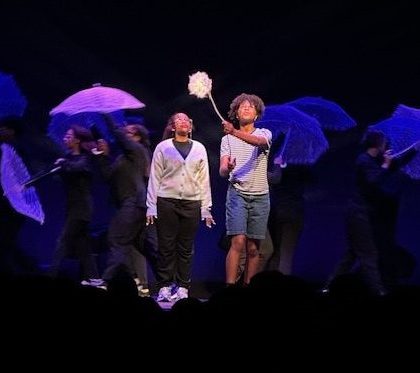Mastering the Art of Classroom Management

Nov 08, 2023
It’s a familiar refrain among early childhood providers, whether they are brand new to the profession or in their tenth year: “How can I meet the needs of a classroom full of active students?”
Providing guidance for a classroom full of busy young children can be challenging–especially at the start or end of a school day, snack time, nap time, outdoor playtime, or during transitions. But once an educator is able to establish expectations, and a rhythm to the day, it becomes much easier.
The arts are a useful tool to create transitions and promote self-regulation seamlessly throughout the day. “Our Teaching Artists frequently talk with us about the value that their teacher partners find in using arts-integrated strategies; not only to support curricular content but also to enhance classroom management,” says Laura Annunziata, Assistant Director, Professional Development for Wolf Trap Foundation for the Performing Arts. “Arts strategies can be a powerful ingredient in successful transitions, or for working on skills like turn-taking or managing personal space. The arts can bring focus and engagement to many different aspects of classroom life and routines.”
Here are some helpful arts-based classroom management strategies developed by Wolf Trap Teaching Artists for the early childhood classroom:
Awa Awa Atu – A Cultural Ghanian Hello and Goodbye Chant
Wolf Trap Master Teaching Artist Kofi Dennis shares his version of this experience, which brings children and adults together using call and response. It can be a helpful ingredient for a transition time; or arrivals, departures, and “welcomes.” Amongst the Akan people of Ghana, “atu” means “hug”; someone might say, “Awa atu” as a greeting, or as they are preparing to say goodbye, indicating that they are about to embrace another person.
The ability to keep a steady beat is a fundamental music skill that has been shown to support language and literacy and thought organization. In this experience, Wolf Trap Master Teaching Artist Val Carroll demonstrates how steady beat can create focus and provide a unique way to explore emotions. This experience was developed for infants and very young children but can be adapted for young children up to the age of three.
Stages for Learning: Sticky/Smooth—A Classic Wolf Trap Warm Up
“Sticky/Smooth” can be used for warm-ups or transitions. Wolf Trap Master Teaching Artist Michele Valeri introduces the concept of opposites in a strategy that incorporates movement and a vocal chant. This exercise helps focus children’s attention and promotes self-regulation, as they prepare to move through the activities of their day.
To learn more artful strategies for the early childhood classroom, visit Wolf Trap Institute’s Digital Resource Library at Wolftrap.org/education.
Recommended Posts

Ear Snacks, Soundwaves, and Shenanigans: Meet Andrew & Polly
Jul 01, 2025 - Education, Experience, For Kids, Summer


